May 18, 2024 | 14:30 GMT +7
May 18, 2024 | 14:30 GMT +7
Hotline: 0913.378.918
May 18, 2024 | 14:30 GMT +7
Hotline: 0913.378.918
Despite the difficulty of the Covid-19 pandemic, agriculture has achieved a good outcome, boosting output capacity and export growth to record levels. Could you comment on some of the industry's key advancements from the beginning of the year to the present?
Agriculture and other economic sectors are hampered by the Covid-19, particularly the fourth outbreak. However, by taking the initiative and strictly following the Ministry of Agriculture and Rural Development's operational scenarios, agricultural output in the first seven months of the year produced highly positive results.
Typically, the growth rate grew by 3.82 percent year on year in the first half. This is the fastest pace of growth in the last decade (from 2011 to the present). Additionally, agricultural exports totaled USD 28.6 billion in the first seven months of the year, a USD 3.9 billion surplus. All production areas, including agriculture, animal husbandry, fishery, and forestry, fulfilled or surpassed the established plan.
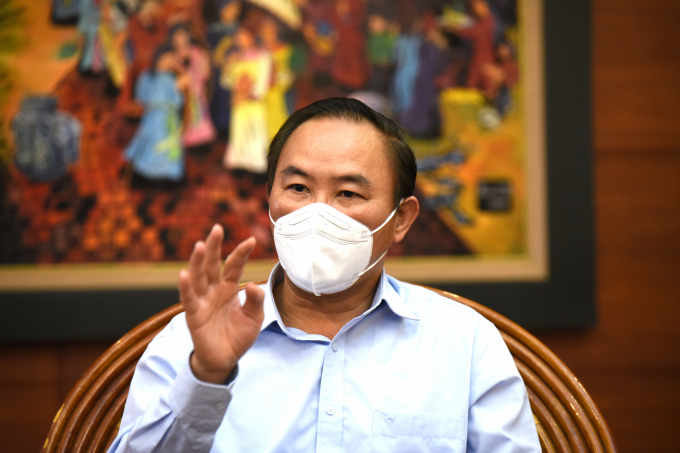
Deputy Minister of Agriculture and Rural Development Phung Duc Tien shared with the press about solutions to promote agricultural growth in the last months of 2021. Photo: Minh Phuc.
Rapid response to market fluctuations is critical in the context of the Covid-19 pandemic. Could you elaborate on the experience of implementing solutions in the agriculture sector?
We are currently seeing many Covid-19 outbreaks, each of which happened during the agricultural harvest season. For instance, during the last wave of Covid-19, over 350,000 tons of lychees in Bac Giang, Hai Duong, and many provinces were at risk of becoming difficult to consume.
From there, we developed consumption scenarios and shifted to the mode of commerce to e-commerce platforms, live streaming, and online sales.
Second, we bolstered our trade promotion efforts with countries such as the United States, Japan, Australia, New Zealand, and China to increase agricultural product consumption. We are now instructing other businesses, such as mango, longan, and rice, to aggressively link from the producing region to the customer base in a variety of ways, based on our experience with the lychee crop.
MARD was the driving ministry in establishing specialized working groups to address difficulties quickly during the Covid-19 pandemic, including coordinating activities to assure agricultural output, circulation, and consumption in the southern and northern regions in the recent past. Could you please describe the direction and operation of the Ministry's two specialized Working groups during the last few years?
We established two Working Groups, one in the south and one in the north, chaired by two Deputy Ministers. As is well known, longan and mango were abundant during that period in several southern provinces such as Dong Thap and Ben Tre. The Mekong Delta regions also have a large capability for shrimp and pangasius production. Meanwhile, domestic consumption has declined; the process of shipping commodities has become congested; and agricultural labor has reduced as well, resulting in certain disadvantages.
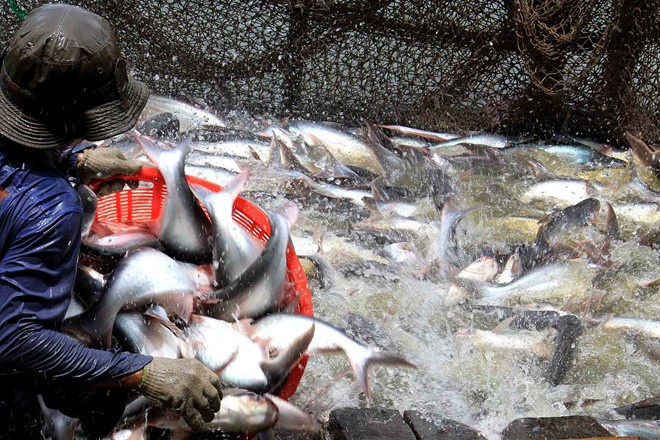
Harvesting pangasius in the Mekong Delta. Illustration: Le Dan/Zing.
To address this issue, the Southern Working Group has connected companies, industrial groups, cooperatives, farms, and Farmers' Associations to over 1,000 locations of agricultural product supply and consumption, thereby resolving the problem of agricultural product consumption. Although several industry chains have been impacted, none have been disrupted.
Additionally, preparations for input circulation in agricultural output have been made so that when the Covid-19 pandemic is contained, local governments may quickly execute plans for autumn-winter and winter-spring crops.
If we are unable to accomplish these two goals, agricultural goods harvested during the harvest season will not be fully consumed and the price will remain low. And if agricultural goods are unable to be harvested, they will have a direct effect on the following crop, increasing the danger of agricultural product shortages.
Recently, the northern regions have maintained considerable control over the Covid-19 epidemic. As a result, it is important to foster agricultural growth in these areas. It is well known that in the past, several provinces and cities in the North had extremely rapid agricultural expansion. Products are used to meet local demand and export, as well as to build a reserve to compensate for the southern regions' scarcity.
Thus, Vietnam would avoid supply disruptions and shortages of agricultural goods and food, as occurred during the outbreak of African swine disease, when we lost six million pigs and had a direct impact on the CPI, a key economic indicator.
Could you tell us about some of the major solutions that the MARD emphasizes to sustain the supply chain while also ensuring compliance with anti-pandemic requirements?
As we all know, agriculture production is experiencing several challenges and obstacles, like the Covid-19 epidemic, illnesses on newly planted trees and animals, and the approaching rainy and flood seasons.
To address the problem, the Ministry's two specialized working groups must work tirelessly to drive production promotion, assure rapid development, and compensate for the deficit in the southern regions. After establishing a connection between supply and demand, it is important to assure the circulation, distribution, and preparation of agricultural supplies and seeds for the forthcoming autumn-winter crop.
Seafood in the southern provinces totals around 5 million tons, which must be collected swiftly and processed without encountering problems.
Because these entities act as a middleman between raw material locations and the market, their absence will result in agricultural product congestion.
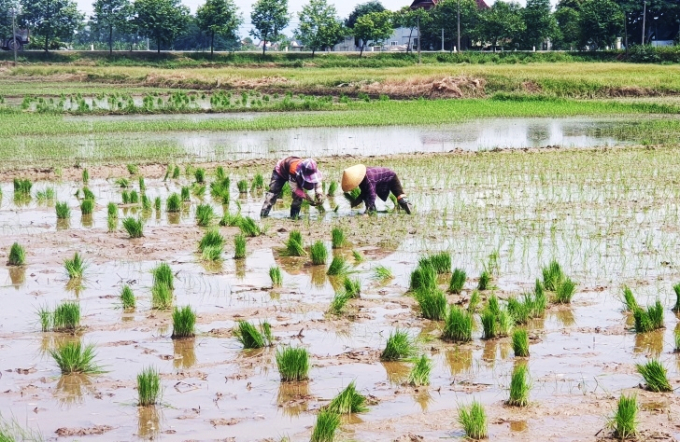
It is necessary to continue to promote production while ensuring the prevention and control of the Covid-19 epidemic Illustrative photo: TL.
Another issue is that wholesale marketplaces, trade centers, and supermarkets must reopen. Because these systems use between 65 and 70% of agricultural goods.
Additionally, frozen seafood processing plants have encountered difficulties and problems. There are firms with tens of thousands of employees that are struggling to execute the "three on-sites" mantra. Additionally, the immunization of persons involved in the agricultural supply chain is critical. Because it takes these people to create a system that allows tens of millions of farmers' goods to be consumed.
The State Bank of Vietnam must conduct an assessment of firms seeking investment financing. As a result, the units boosted their rice, aquatic, and animal product purchases. Only then will we be able to align the whole production system with the scenario and carry out the plan as intended. These are the fundamental solutions.

Vaccination must be organized for people in the agricultural production chain. Photo: Le Hoang Vu.
Could the availability of food and commodities be in low supply during the Covid-19 pandemic's last months?
In terms of food and food products, we aim to produce more than 43.19 million tons of rice this year. Domestic consumption is estimated to be slightly more than 14 million tons; rice used as seed exceeds 1 million tons; reserves total 3 million tons; processing totals 7.5 million tons; and exports amount 6.5 – 6.7 million tons of rice (equivalent to approximately 13.5 – 13.7 million tons of rice), indicating that our supply of rice, vegetables, and fruits is sufficient.
In terms of meat, pork output increased by 6.1 percent in the first seven months of the year, while seafood production is anticipated to reach 8.6 million tons this year. As a result, our meat supply is entirely sufficient, and we must assert that agriculture is the bedrock and cornerstone of every scenario.
Many thanks!
Translated by Linh Linh
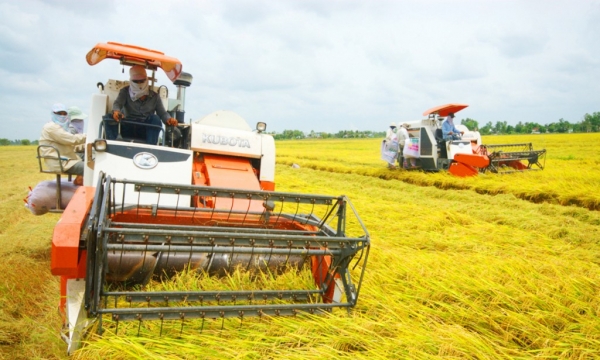
(VAN) The Multi-phase Approach (MPA) program aims to encourage client countries to invest in low-emission rice production.
/2024/05/15/1131-2-090733_559.jpg)
(VAN) The Vietnam Trade Office in Sweden said that the Northern European market has just added a number of regulations for imported cashew nuts.

(VAN) That is the decisive directive of the Chairman of the People's Committee of Vung Tau City in preventing IUU fishing violations in the locality.
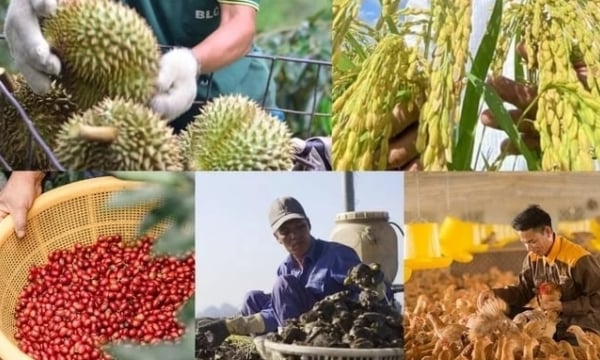
(VAN) The Government requestes ministries, departments and localities create favorable conditions, encourage farmers and agriculturists to study and increase their specialized levels.
/2024/05/12/1930-2-141548_348.jpg)
(VAN) Deputy Prime Minister Tran Luu Quang raised nine tasks and solutions for forces to prevent and overcome the consequences of natural disasters in the coming period at a conference on May 10.
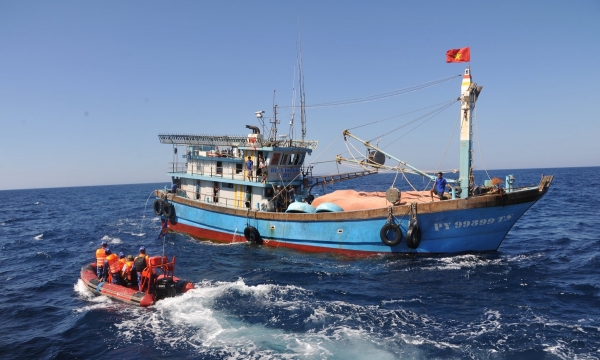
(VAN) The vission by 2050 is set on the Aquatic Resource Protection and Exploitation Planning in the period of 2021-2030, vision to 2050.
/2024/05/10/2117-1-230539_370.jpg)
(VAN) Households assigned sea surface must make the conversion from foam buoys to HDPE floating material. Any household that does not guarantee this will withdraw the decision to assign sea areas.